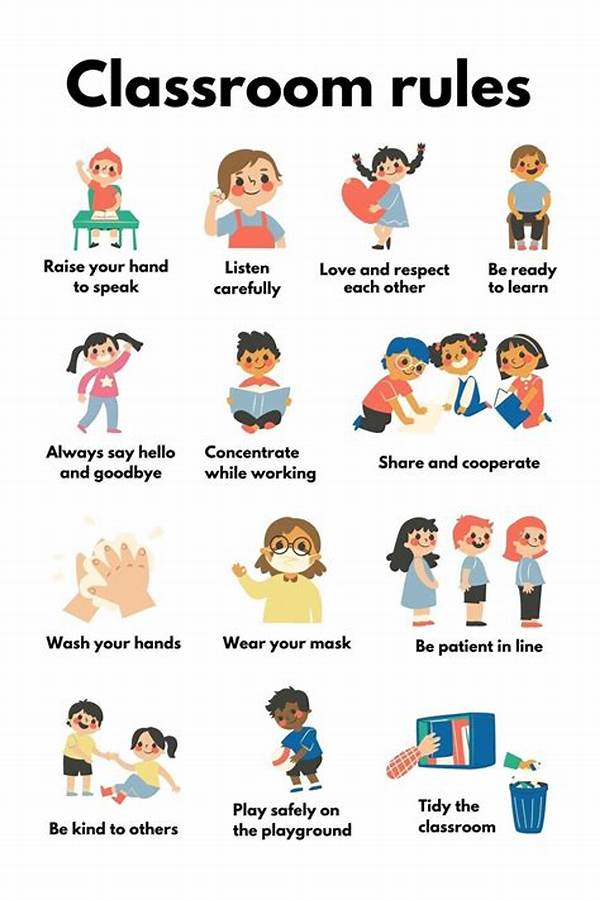Hey there, fabulous readers! So, let’s dive into a topic that may not sound super exciting but is incredibly important, especially for the little explorers in our lives—etiquette rules for young learners. Trust me, with these handy tips, we’re not only nurturing little prodigies but also ensuring they grow into kind and respectful adults.
Read Now : Budget-friendly Family Waterpark Offers
Why Etiquette Matters for Young Learners
Alright, let’s kick things off by discussing why etiquette rules for young learners actually matter. It’s not just about making sure kids know how to say “please” and “thank you” (though that’s definitely part of it). Teaching etiquette helps young learners build strong, positive relationships with others. When kids learn the rules of social behavior, they’re more confident and better equipped to handle various social situations.
Moreover, kids who understand etiquette are often more empathetic and considerate. They learn to think about how their actions affect those around them. Picture this: a classroom where everyone is thoughtful and courteous. Sounds idyllic, right? That’s what etiquette can do! Also, learning these rules early can prepare young learners for future academic and professional success. After all, first impressions matter, and the right manners can make all the difference.
Finally, etiquette rules for young learners foster a sense of self-discipline. As children practice these rules, they learn self-control and patience. Whether it’s waiting for their turn in class or being polite in conversations, these small actions contribute to overall personal development. In essence, etiquette is the glue that keeps our social fabric intact, and it begins with our youngest members!
Five Essential Etiquette Rules for Young Learners
1. The Power of the Magic Words: Teaching kids to use “please,” “thank you,” and “excuse me” cultivates a culture of respect and appreciation. These simple phrases go a long way in establishing good manners in young learners.
2. Listening when Others Speak: Encouraging children to pay attention and listen when others are talking helps in building respectful communication skills. It’s all about mutual respect!
3. Sharing is Caring: Instilling the habit of sharing teaches young learners about generosity and empathy. Sharing turns simple activities into collaborative experiences!
4. Greeting People Warmly: Teaching children to make eye contact and offer a friendly greeting fosters a welcoming environment. This small act shows kindness and consideration.
5. Table Manners Matter: Teaching kids basic table manners, like not talking with their mouth full and chewing with their mouths closed, sets the stage for polite interactions in social settings.
Read Now : Low-cost Resort Stays For Families
How to Teach Etiquette to Young Learners
When it comes to teaching etiquette rules for young learners, it’s all about creativity and patience. Kids learn best when they’re having fun, right? Think about incorporating games that illustrate the importance of manners. Role-playing can be a stellar way to show kids the right way to act in various scenarios. Imagine a play where little ones act out a dinner scene or a classroom interaction.
Consistency is crucial. Reinforce good behavior by applauding it. Positive reinforcement, like simple praises or reward stickers, can motivate young learners to keep practicing etiquette rules. Remember, it’s a learning curve, and mistakes are part of the process. Patience is key—gently correct them while praising their efforts. As you guide them through these learning experiences, it can also be valuable to model the behavior you want to see. Young minds are like sponges, absorbing actions more than words.
Creating a Welcoming Environment: The Role of Etiquette for Young Learners
Encouraging Positive Social Interactions
One of the wonderful outcomes of teaching etiquette rules for young learners is creating a welcoming and inclusive environment. When kids understand and practice good manners, they contribute to a positive social atmosphere. Whether in the classroom or on the playground, this leads to healthier and more meaningful interactions among peers. Children are naturally more comfortable and confident when they perceive themselves in a setting where mutual respect is the norm. Encouraging positive social interactions is pivotal in laying the groundwork for an inclusive community.
Lifelong Skills and Personal Growth
Moreover, etiquette isn’t just about social niceties; it equips young learners with lifelong skills. These rules help kids build character, promoting traits like empathy, humility, and honesty. As they grow, these skills extend beyond their immediate circle, influencing broader aspects of their lives, such as teamwork and collaboration. It’s truly fascinating how a basic understanding of etiquette can evolve into essential personal growth tools. The habits children develop during their formative years can shape the kind of adults they will become, so why not start strong?
Integrating Etiquette into Everyday Life
Etiquette rules for young learners shouldn’t feel like a strict set of rules but rather an integral part of their daily experiences. It’s about making these lessons seamless, like integrating them into storytime or during meals. For instance, sharing stories with morals that emphasize kindness or respect can gently instill these values without feeling preachy. Similarly, involving kids in setting the table can be a practical lesson in table manners. By weaving etiquette into everyday activities, kids begin to see it as a natural and necessary part of life.
In summary, instilling etiquette rules in young learners is about laying the foundation for a more respectful, compassionate, and socially conscious generation. It’s more than just about politeness; it’s about enhancing the social dynamics that enrich their developmental journey. A little patience, creativity, and consistency in teaching these rules today can turn our young learners into amazing future adults tomorrow. So let’s embrace the art of good manners and make it a delightful adventure for our little ones!



